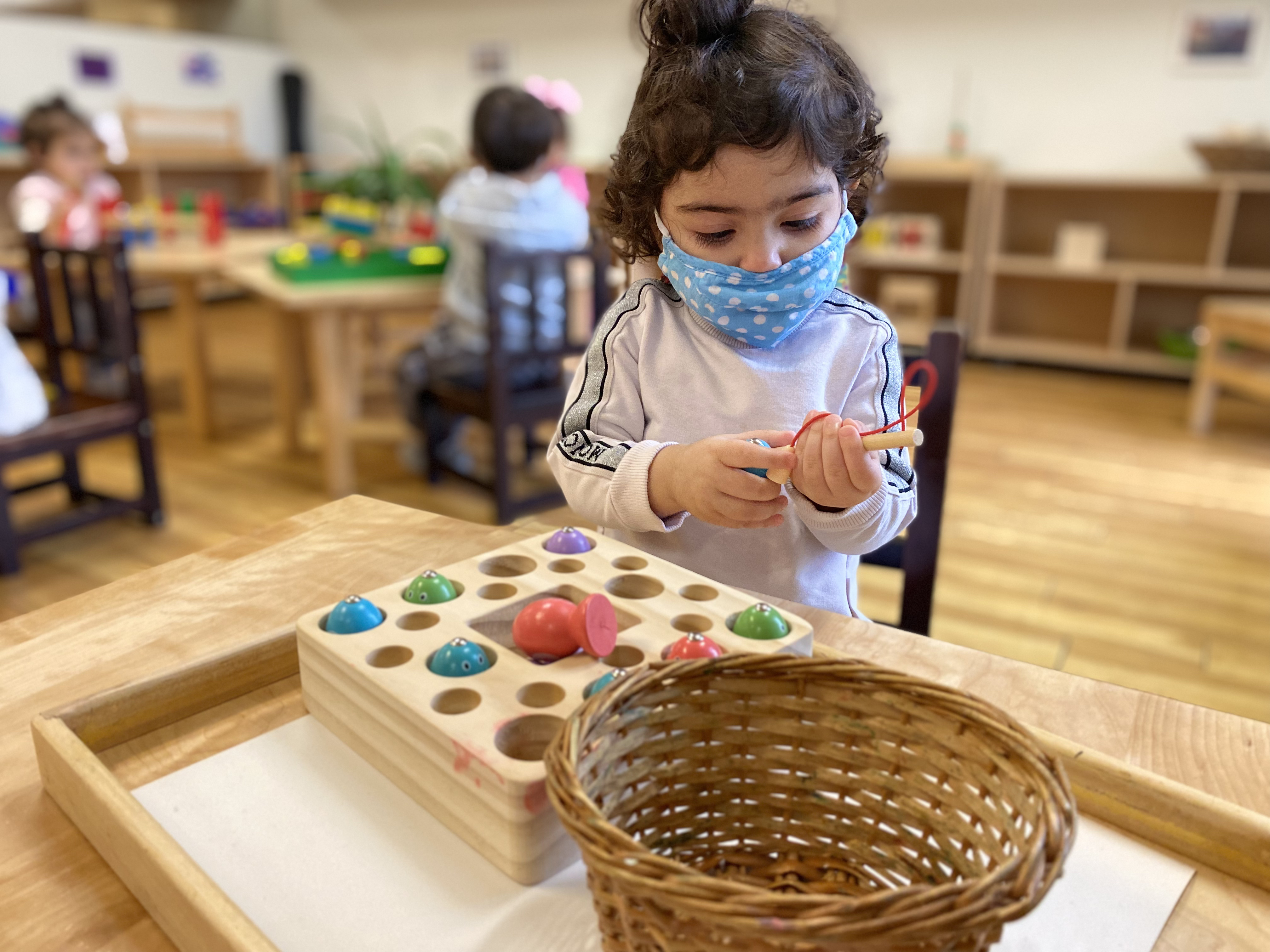(858) 759-0631
It seems like the developmental stage where our children are at relates to making good choices every day. Our sweet toddlers can be very strong-willed, be creative in their way (can be unsafe in certain situations), or simply throw a tantrum very easily. Dr. Maria Montessori mentioned "the birth of will" in toddlers. What it means is that young children, as our toddlers, are just starting to learn to make decisions but they usually don't have enough experience to make good choices. We need to guide them positively to help them develop these skills.
During my Montessori training, and through my experience of working with children at home and school, I learned the best approach is to give two choices (examples) to the child to choose from. This is a good exercise for young children to help them make good decisions. You need to limit the choices to only two, as more choices only confuse or overwhelm our toddlers. Also, very importantly, don't change the choices in the middle of the conversation. If you change the choices, you are (unintentionally) giving a message to him/her that he/she does not need to listen to you because the choice they have chosen or are about to choose is not respected. It is like a promise that is not kept and children can lose trust and faith in you as a result.
For example, suppose your child is having a hard time getting ready to go to school. You tried to help him/her with some suggestions ("how about your favorite green shirt?" etc.) but he/she said no. At this age, children tend to say "no" as an initial response to anything. Due to this, asking yes/no questions does not work well with toddlers. Instead, you can give two choices, "Which shirt would you like to wear today, a green shirt or a yellow shirt?"
Think about your choices before presenting them to your toddler. First, each choice needs to be realistic, Second, each has to have an immediate influence on the child. Third, make sure that the child is involved in the process of decision-making. Lastly, you can keep consistency with the idea. In other words, telling your child "let's put this shirt on quickly and I will take you to Legoland next month" does not work most of the time because; first, the child is not exercised in making a decision, second, the execution of decision making does not reflect onto the child's life immediately; third, that you cannot take him/her to Legoland every time he/she gets changed by him/herself.
I love this approach with our toddlers because I can assure them that I respect them enough by letting them make a choice but at the same time I show them I'm keeping my promise by sticking with the choices I made for them. Most of all, I can have better control over the situation with a positive relationship with the children. The children are also happy because they are given freedom within limits. Some parents have asked me what to do if the child does not want to choose either of the two - no problem. If the child is not ready to make a choice, YOU can. Because he/she may be in the "no" stage, choices may be answered by "no". Please don't be surprised, don't take it personally, and then take a big breath. Then choose one option for your child. The same applies when your child mentions a choice. Please remember the most important rule - that you stick with the choices you give.
– Ladybug Teacher

